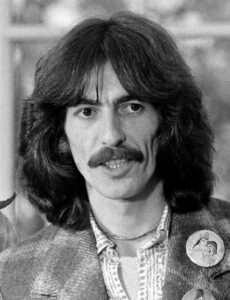On January 10, 1969, George Harrison made a pivotal decision that would alter the course of The Beatles’ history. Amid escalating tensions during the recording sessions for the “Let It Be” album, Harrison walked out of the band, leaving his bandmates stunned and the music world in shock.
The Build-Up to Harrison’s Departure
The “Let It Be” sessions, intended to return The Beatles to their live performance roots, were marred by discord and dissatisfaction. Harrison, who had contributed significantly to the band’s musical evolution, found himself increasingly sidelined. His songs were often overshadowed by the dominant contributions of John Lennon and Paul McCartney, leading to a sense of creative frustration. The atmosphere was further strained by the presence of Yoko Ono, John Lennon’s partner, whose involvement in the sessions was a source of contention among the band members citeturn0search0.
On that fateful day in January, after a particularly heated argument with McCartney, Harrison decided he could no longer continue in the band. In a moment of resolve, he packed his belongings and, with a simple “See you ’round the clubs,” he left the studio, effectively quitting The Beatles citeturn0search0.
The Aftermath and Harrison’s Return
The remaining Beatles were taken aback by Harrison’s departure. Lennon, McCartney, and Starr continued rehearsing, albeit with a palpable sense of loss. In an attempt to salvage the situation, the band convened a meeting at Ringo Starr’s home on January 15, 1969. During this five-hour discussion, Harrison set forth his conditions for rejoining the group. He insisted that the idea of a live performance before an audience be abandoned and that the recording sessions be moved from the cold, impersonal Twickenham Film Studios to the more intimate and comfortable Apple Studios in Savile Row 
Harrison’s return was not just a personal victory but also a testament to his enduring commitment to The Beatles. However, the underlying issues within the band remained unresolved, and the seeds of their eventual breakup had been sown.
The Legacy of Harrison’s Departure
George Harrison’s brief departure from The Beatles highlighted the deep-seated tensions and creative differences that plagued the band during their final years. It underscored Harrison’s desire for artistic recognition and his frustration with the band’s internal dynamics. This episode also marked a turning point in Harrison’s musical journey, leading him to explore solo projects that allowed him greater creative freedom.
In the broader context, Harrison’s exit was a precursor to the band’s eventual dissolution in 1970. While The Beatles would go on to produce more music, the harmony and unity that characterized their earlier years had been irrevocably altered. Harrison’s departure serves as a poignant reminder of the complexities and challenges that accompany fame, creativity, and collaboration.
In retrospect, George Harrison’s decision to leave The Beatles, though temporary, was a significant moment in the band’s history. It not only reflected his personal struggles but also mirrored the broader tensions within the group, ultimately contributing to the end of an era in music history.














